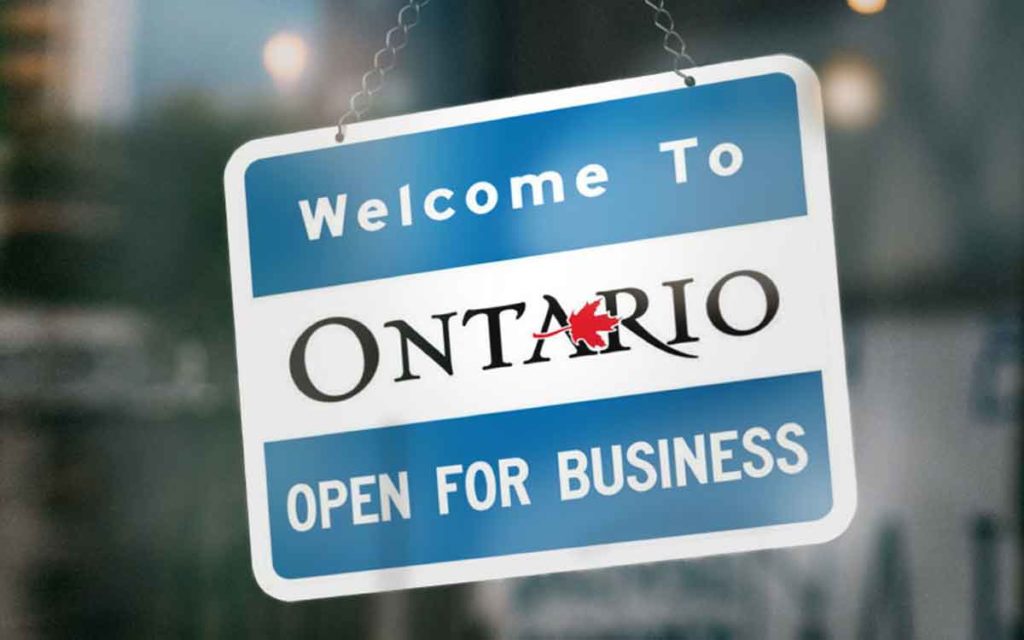
Very early in my journalistic career I learned the mantra “if it bleeds it leads” and the various machinations of the term.
It didn’t always refer to the more macabre stories in nature. The phrase also refers to the stories that get people’s dander up the most – i.e. the latest in the endless teacher or school disputes or who is marching in what parade.
So it should be no surprise the Ford Government’s Open for Business strategy – not exactly “man bites dog” – often gets ignored on the front pages. However, two very significant changes were made in the past year to actually open Ontario for business.
The first – and I have written about it here – was the allowance for credit unions to syndicate loans across Canada through any regulated financial institution of their choosing. The idea behind credit unions wanting wider loan syndication allowance was in no small part the idea of diversified business powers.
These same diversified powers stemmed from what Canadian pension plans did to change their fortunes. In the 1980s Canada’s pension plans were limited in their investment options – low-yield government bonds were their only choice.
A need for various business streams and diverse geographical locations lead to changes to pension plans. Today through prudent fiscal management and proper use of the tools government granted to them, Canada now has some of the strongest pension plans in the world.
The idea of diversified pension plan investments has made its way into public plans as well allowing for a portion of the investments to go to infrastructure. In fact when Ontario was looking to create its own pension plan, pre-2015 and prior to the federal government enhancing the Canadian plan, infrastructure investments were a key component being identified.
The one key area lacking the ability to invest in diversified business streams are municipalities. Or rather I should say were municipalities. That was until last January when the Ford Government made the change allowing Ontario to become the third province in Canada to allow for a greater range of municipal investments. Nova Scotia and Alberta were the first two provinces.
Ontario is Canada’s finance capital and we restrict the finance industry in a multitude of ways. Given that, this change was long overdue.
The capital municipalities use for such investments are not budget line items – i.e. the municipalities won’t raise your taxes to make these investments. In fact every level of government has these funds and invests them in various forms.
One form of capital used in a bank account that pays a basic interest and is usually populated by operating funds – these are not those funds.
Another source of investment assets are reserve funds that can be invested. However, not unlike the case of pension plans in the 1980s only able to invest in government bonds – these investments were only allowed in domestic government securities.
The change now allows for a municipality with more than $100 million in investment assets or one that holds a net financial position of $50 million can now manage portfolios under prudent investment standards. These investments options are now much broader and include infrastructure – not unlike the dreamed up options of the defunct Ontario Pension Plan strategy.
Despite this change, and according to an article published by the C.D. Howe Institute, January 30, 2020, “Jumpstarting Municipal Investment Returns – The Prudent Thing to Do,” by Patrick Gill, Toronto is the only municipality in the province – one of 444 – using the new standard.
Additionally, Mr. Gill notes that in 2016 only half of the municipalities in Ontario were investing their reserved assets. This amount according to the C.D. Howe Institute was $29 billion and generated a return of $514 million in 2016.
This revenue could now be used to fund municipal programs, generate more investment revenue and keep taxes down. So the question is how do the other 50 per cent of municipalities start investing their reserved assets? The second question is how do the other 443 municipalities – other than Toronto that is – use the new investment standards and opportunities?
It is not as simple as saying let’s start doing this – though every journey begins with the first step. The municipalities must look at programs procedures and prudency. Then investment dance partners need to be identified and specific programs to invest into must be chosen – I smell politics here, but that is to be expected.
Here is the kind of benefit we could see. A financial institution takes the lead on an infrastructure project – i.e. purpose built rental housing.
The municipality wanting the units built to deal with affordable housing issues carves out an amount for the investment. Other financial institutions get on board to limit the municipalities’ liability and risk profile.
The result is a return on the investment and units to allocate families from the housing wait list to. In Niagara region that wait list is in the 10,000-range the last time I checked.
The municipality can then put out a press release acclaiming that it – along with its partners – built purpose-built rental housing. Heck, I bet you could find a way to open it up to community investment so everyone can feel like part of the solution.
I digress.
That may all seem too easy, but the funny thing is all it really amounts to is taking the binders off business and entities – opening Ontario for business. I have no doubt there are several other steps that need to be taken and significant programs and policies.
The thing is when you let the market have access – especially to things like investment capital – it will find a way to make it work. So opening Ontario for Business isn’t a front-page car crash, who got what e-mail when or where a Prince decides to live, but it is a real story that could have a positive impact on people’s lives and one that should be shared.

Kelly Harris is Principal of Harris Public Affairs. He is a regular commentator on Global News Radio 640. He has spent the last decade working with Canada’s credit unions and served as Director on the Board of the Canadian Credit Union Association. An internationally published journalist, he has held senior positions in the Gordon Campbell government in British Columbia and Tim Hudak’s opposition at Queen’s Park. An avid traveller, cyclist, member of Bills Mafia and die-hard fan of the Toronto Maple Leafs.




















